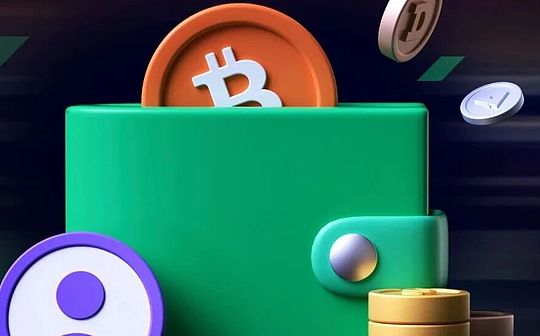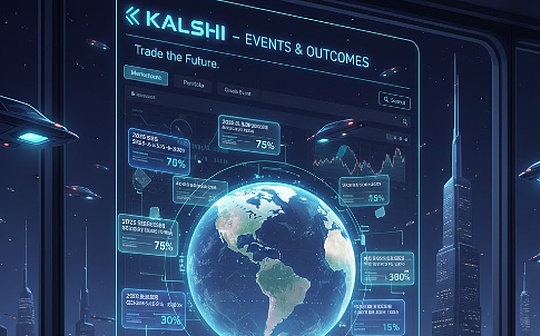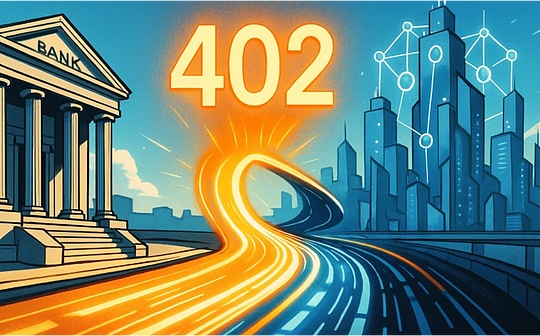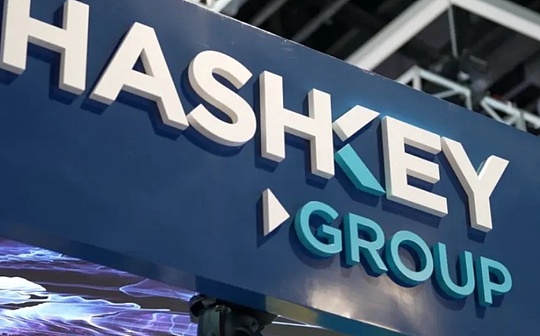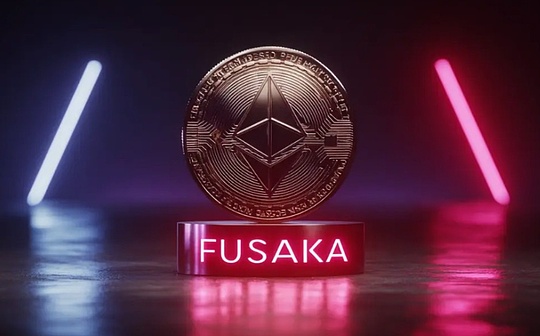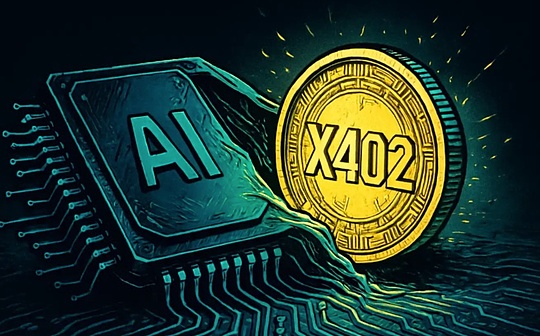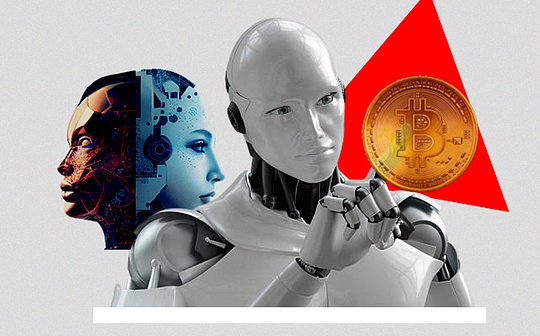
Author: lindabell Source: chainfeeds
In the past year, with the popularization of decentralized AI concepts and the widespread application of various AI tools, AI +Web3 has gradually become one of the hottest topics in the encryption circle.According to incomplete statistics, there are currently more than 140 projects combined with Web3 and AI in the industry, covering multiple directions such as computing, verification, Yuan universe, and games.Ethereum Lianchuang Vitalik also wrote an article discussed the use cases combined with blockchain and AI, and pointed out that the cross -field use cases of the two are increasing, and some cases have higher significance and robustness.In addition, in the “Hong Kong Web3 Carnival” event recently held in Hong Kong, whether it is the main venue or the venue, the topics of AI and Web3 have been frequently mentioned.
This article selects three WEB3 and AI combination projects worthy of attention to discuss their unique positioning and development prospects in the field of encryption AI.
Bittersor: The market value is the lead, but the practicality is questioned by the market
In the field of AI, unlike resource -intensive computing power and data, the encryption algorithm focuses on technical dense work.However, there is a problem in the current AI field, that is, due to the existence of technical barriers, the algorithm and model often cannot effectively cooperate, resulting in a situation of a zero -sum game.In order to change this situation, Bittersor proposed a solution that promotes cooperation between different algorithms through the blockchain network and incentive mechanism, and gradually builds a shared knowledge algorithm market.In short, similar to the mining network of Bitcoin, Bittnsor just replaces the calculation process of Bitcoin mining as a training and verification AI model.
From the name of the name, “Bittensor” can be decomposed into two parts: “Bit” and “Tensor”.Among them, we are no stranger to Bit, and Bitcoin can be understood as the minimum currency unit.In a broader computer science, the most basic unit of BIT representative information.“Tensor” originated from the Latin “Tendra”, which originally meant “Extension”.In physics, Tensor refers to the tensor with multiple indexes, which is a multi -dimensional array or matrix, which can represent various types of data.In the field of machine learning, Tensor means to represent and process multi -dimensional data.
The architecture of Bittersor can be divided into two layers. The bottom layer is a blockchain based on Polkadot Substrate. It is responsible for executing a consensus mechanism and motivating the network.The AI layer is responsible for reasoning, training, and ensuring that the input/output compatibility between the Bittersor protocol node is.There are two key participants in the Bittensor network, which are miners and verifications.Miners submit the training model for the currency reward to the network, while the verificationrs are responsible for confirming the effectiveness and accuracy of the model output, and select the most accurate output to return to the user.In order to create a positive competition cycle, Bittensor realizes incentive allocation through the Yuma consensus mechanism.Yuma consensus combines the two mechanisms of POW and POS, of which the miners can get tokens rewards through competitive calculation results, while verifiedrs need to pledge tokens to pledge to a sub -network and complete the verification work to get a certain number of TAO motivationThe more accurate and consistent the screening and evaluation of the AI model, the more rewards you get.
The subnet is the core component of the Bittersor ecosystem.In October 2023, Bittensor introduced the concept of “Subnet” through Revolution upgrade. Different subnets can be responsible for different tasks, including machine translation, image recognition and generation, language models, etc. At the same timeInteractive and learning.Anyone can create a subnet on Bittersor, but you need to pay for the use of TAO token. The amount of cost depends on the supply and demand of the network on the network.In addition, before the main network of the online subnet, it is necessary to run the test on the local and the test network.
There is currently a special subnet on Bittersor0# ROOT and 32 other subnetsEssence0# ROOT is built by OpenEnsor Foundation. As a governance center on Bittensor, the TAO produced to other subnets can be assigned to other subnets through consensus.On the 0# ROOT, the role of the verifications comes from the top 64 verifications with the largest number of other sub -online pledge, and the role of the miner is the role of other subnets.In addition, 0# ROOT can also distribute inspiration for other subnets according to the contribution.For the remaining 32 sub -nets, verification nodes and mining unions have obtained a certain percentage of TAO based on their respective contributions.Under normal circumstances, 41% will be assigned to the verifications, 41% to the miners, and the remaining 18% will be assigned to the creator of the subnet.The competition between subnets in the Bittersor ecosystem is very fierce.At present, the upper limit of the number of subnets allowed by the system is 32, but there are already more than 200 sub -nets in the test network waiting to register on the main network.Recently, some excellent teams have registered their own subnets on Bittensor, such as MyShell TTS.According to the sub -network registration rules, once the upper limit of the number of subnets is reached, the system will automatically cancel the token with the lowest amount of token.
>
Bittersor has also recently suffered questions about its registration costs and practicality.It is reported that the cost of registering a subnet on Bittersor is 2078.49 TAO, and on March 1, it reached 10,281 TAOs, equivalent to over 7 million US dollars.And as the price of TAO rises, the registration fee may increase further.And whenever a project is registered with a subnet, the registration fee will double, and if no one is registered, the price will be halved in four days.For developers who want to create or participate in subnets, high registration costs will undoubtedly become a huge burden.In addition, the practicality of Bittersor subnet has also been questioned.Of the 32 sub -nets, most of them are low -thresholds such as “data finishing”, “text, images, and audio conversion”.In the team built on Bittensor, there are no more than a dozen members of the team, most of which are only 2 to 3.Eric Wall, the initiator of the Bitcoin Ordinals project Taproot Wizards and the Bitcoin NFT project Quantum Cats, also expressed his views on the social platform.It is considered that Bittersor is just a meaningless decentralized experiment and does not provide any practicality.Eric Wall pointed out, “Subnet #1 is described as a text prompt service. But in fact, its working mode is very simple, users send a prompt, the miner responds, similar to ChatGPT. The miners participating in this process will get the TAO agent.Currency is award. But there is a serious redundancy here, because the verifier is only to check the similarity of the answer. If the answer from the miner is different from others, he will not get the reward.Verify whether the model is really running.Exposure “
Ritual: Super luxury background blessing,Use ZKP for AI model reasoning training
There are many problems in the existing AI stacks, including the lack of guarantee for computing integrity, privacy, and carrying review.In addition, the infrastructure custody of a few centralized companies also limits the local integration capabilities of developers and users, leading to the emergence of effective problems.In this context, Ritual, a decentralized AI computing platform, came into being.
The main goal of Ritual is to provide an open and modular sovereign execution layer for artificial intelligence, that is, how to introduce artificial intelligence into EVM, SVM and other virtual machine environments.To put it simply, the Ritual computing resources and model founders by connecting distributed node networks allows creators to host their AI models, while users can add all the reasoning functions of the AI model to their existing workflows in a verifiable mannermiddle.
Ritual team background is very powerfulThe co -founder Niraj Pant and Akilesh Pott were former Polychain ordinary partners.In addition, team members include senior engineers from well -known companies such as AI and Facebook Novi, as well as professionals from well -known institutions such as Dragonfly, Protocol Labs, DYDX.In addition, Ritual’s consultant lineup is also very eye -catching, Including Eigenlayer founder and partner, Sreram Kannan, Gauntlet founder and CEO Tarun Chitra, and Arthur Hayes, co -founder of Bitmex.
As of now, Ritual has completed two rounds of financing.In November 2023, Ritual announced the completion of $ 25 million in financing, Archetype led, CCOMPLICE, Robot Ventures, DAO5, Accel, Dilectic, Anagram, AVRA and Hyperspher, and Angel investor Balaji SR. Inivasan, Protocol Labs researchers Nicola Greco, WorldCoin research engineer DC Builder, Eigenlayer chief strategic officer Calvin Liu, Monad co -founder Keone Hon, AI+Crypto project Modulus Labs Daniel Shorr and Ryan Cao.And on April 8, 2024, RitualgetAfter Polychain Capital’s millions of dollars investments, the specific amount is not known for the time being.
>
At present, Ritual has launched the lightweight library InferNet on the introduction of the calculation chain, allowing smart contract developers to calculate under the chain through the Infernet node, and pass the calculation result to the smart contract on the chain through the Infernet SDK.Infernet nodes are the under -level chain client of Infernet, which are mainly responsible for monitoring or underneath requests on the chain or under the chain.Infernet SDK is a set of smart contracts allowing users to subscribe to the output of the workload under the subscription chain.One of its main cases is to introduce machine learning reasoning into the chain.Infernet can deploy to any chain, allowing any protocol or application for integration.In addition, Infernet also allows developers to introduce their own certification systems, including Halo2 verification device and Plonky3 verification device.
Infernet is not directly performed on the chain, but is similar to the prophet system. The request is issued on the chain, the nodes under the chain are executed, and the corresponding return to the chain will be returned.But this method also existsAsynchronous problemThat is, the developer needs to wait on the block after making a request, and cannot be responded immediately.The Ritual method is to allow developers to conduct reasonable operations directly in their familiar environments without having to care about the position of the operation.Although these operations are still performed outside the chain, these computing operations are embedded in virtual machines, so that each node can perform the modified virtual machine while performing a super -optimized artificial intelligence operation.This method can be regarded as an interactive communication that is achieved by pre -compilation.The emergence of this method is also the development trend of blockchain ecosystems.
In terms of specific implementation, through Infernet, developers can entrust the computational dense operation to the chain, and consume output and optional certifications in smart contracts through the chain to avoid the restrictions on the execution environment of the smart contract.For example, Emily is developing a new NFT collection that allows the castor to add new features to NFT.Emily has built a casting website that published the signature commission to the Infernet node running a customized workflow. The workflow can analyze user input and generate new images. Infernet node sends the final image to the final image to through the chain transaction toOn her smart contract.
>
At the end of 2023, Ritual posted an application supported by Infernet SDKFrenrugEssenceFrenrug is a chatbot running in the FREND.TECH chat room. Any user holding Frenrug can send messages to Frenrug.For example, you can purchase or sell the corresponding Friend.tech users of the corresponding Friend.tech users, but Frenrug does not directly process user messages. Instead, send messages to multiple Infernet nodes. These nodes run different language models.Infernet nodes will process users’ messages and generate votes on the blockchain.When a large number of nodes vote, the system will gather these votes and perform corresponding operations on the blockchain, such as purchasing or selling key.Finally, Frenrug will reply in the chat room, which contains the voting results of each node and the final operation, allowing users to understand how the system handles their requests.
>
Ritual is currently developing the second product “Sovereign Chain Ritual Chain”.Although Infernet can easily integrate into any EVM chain, so that any protocol can be used.However, Ritual still believes that it is necessary to build a chain, because this can build more efficient functions on the core execution level and consensus layer, and allow users who want to use artificial intelligence to the greatest extent.Vision.Of course, in order to realize the sovereign chain, Ritual needs to build different types of verifications, proof systems, and various complex functions, and it needs to be simple enough so that users can easily use it.
Virtual: more interesting, focusing on user participation
Unlike Bittersor and Ritual and various machine models, Virtual Protocol is similar to a decentralized chemical factory focusing on creating artificial intelligence characters for various virtual worlds.itPay more attention to the participation of users, and integrate human subjective ideas and social consensus into its vision to promote the development of personalization and immersion.The core concept of Virtual Protocol is that the future virtual interaction will be implemented by artificial intelligence and is constructed in a decentralized manner to provide personalized and super -immersed experiences.Among them, personalization ensures that each interaction can establish a personal connection with users, so that it has a unique correlation.On the other hand, immersion can stimulate users with various senses and create a more realistic experience.
>
Virtual ecosystem participants include contributors and verifications.The contributor can provide the model with a variety of text data, voice data, and visual data, whether it is the existing model improvement or the proposition of the new model.These contents will be reviewed and certified by the verifications to ensure accuracy and authenticity, and evaluate the assessment of their contribution quality to ensure that it meets the standards set by the Virtual Protocol ecosystem.
-
New proposal:Anyone can initiate the creation of Genesis Virtual, but it is necessary to pledge at least 100,000 Virtual for pledge within three months and pass the DAO proposal process.All token holders in the Virtual community can vote for the proposal.Once the proposal is passed, a new Virtual NFT will be cast.
-
Contribute to existing models:The proposal will be automatically generated, and the verifications will be reviewed, discussed, verified, and voted for changes.
At present, only the verifications have the right to verify or vote for the proposal, and the entire verification process is anonymous.Verivers need to interact at least 10 rounds of each model.After completing the verification task, the verification person can get a pledge reward that is consistent with the proportion of the total pledge of its representative.If you want to be a verification person, users must hold 1,000 Virtual tokens in the Virtual account and promise to verify all proposals.In addition, Virtual uses the DPOS mechanism. If you want to get a pledge reward without verification, you can choose to entrust the tokens of any amount to Virtual verification.Give the user.
Virtual’s entire participation process is transparent and will record through the public blockchain.All contributions will be converted into NFT and stored in the uncharacteristic contribution library (ICV) to ensure that their tracking and fair allocation rewardsEssenceThe uncharacteristic contribution library (ICV) is a multi -layer chain repository on Virtual. It is filled in the chain that all Virtual’s approval is on the chain. It can present the current state of each Virtual and track its historical evolution.In addition, through open source Virtuals code library model, ICV has created a transparent environment.It promotes a combination of availability and allows developers and contributors to build and seamlessly integrate it with existing Virtuals.
Virtual tokens are the core of the Virtual protocol. Its main features include reward contributors and verificationrs, supporting protocol development, and airdrops.The total supply of Virtual tokens is 1 billion, 60% of which have been publicly circulated, 5% are retained as liquidity pools, and the remaining 35% is specially used for community incentive measures and VIRTUAL protocol ecosystem development initiatives.In the next three years, the number of releases will not exceed 10%each year, and it will be approved by the management department to deploy.
The Virtual protocol achieved the flywheel driver through revenue and incentives.The income comes from the use of various DAPPs, and DAPP needs to pay the use fee to the agreement.At the end of each month, the Virtual Council is incentive to distribute according to the total income inflow of DAPP.10% of them are allocated to the agreement, and the remaining 90% are allocated between the pledge ratio between each Virtual application to ensure that the income is directly proportional to its contribution.For example, the total inflow income is $ 100, of which 10 US dollars will be assigned to the agreement.Among the remaining $ 90, because Virtual A pledged ponds have 9,000 tokens, and Virtual B pledged ponds have only 1,000 tokens.Then Virtual A will get 90*90%= 81 US dollars, while Virtual B will 90*10%= 9 US dollars.
In each Virtual application, the income will be evenly distributed to the verified and contributors.Verifications will obtain income based on the operating time and the amount of pledge. Among them, the runtime time refers to the proportion of the number of verification proposals to the total number of proposals.For example, the operator A in Virtual A runs 90%, and it will get 81/2*90%= 36.45 US dollars.Subsequently, the income will be further allocated to each pledker, and will be specifically allocated according to the amount.In addition, 10% of the default will be paid to Chi Zi as the verification of the entrusted fee.The contributor is distributed according to the contribution and utilization and impact pool.Among them, the contribution and utilization rate considers the contribution of the contributor in the system that is actively used in the system. The contributors of the development and maintenance model will obtain 30%of the total distribution income.70%of the total distribution income will be obtained.In addition, the impact pool is awarded points based on the importance of contribution.
>
Virtual is currently in a game called AI WAIFU virtual partner.The background of the game story occurs in a world named “Akadia”.In the game, as an Akadia magician, you need to confront other magicians and their Waifus.You can choose to talk to your WAIFU to deepen the contact, unlock the hidden story, and you can also get more returns by giving gifts.At present, there are three different WAIFUs in the game to choose from, and each Waifu has a unique background story and personality.In addition, this game also introduces combat mode, you can seduce other Waifus and Waifu to protect yourself.All expenditures in the game will enter the reward pool of the game, and 60% of the WAI trading fee will also be allocated as part of the reward pool.
Unlike other AI partners and chat robots, AI Waifu appears visually as a 3D model, and can make emotions and animation reactions to sound and text.By communicating with AI WAIFU, she does not repeat the content style, but continues to learn and give players a personalized response.In addition, AI WAIFU is a cross -platform PWA, which has an economic design with encrypted enlightenment, allows common ownership, and pays its expenditure as an income share to developers.
In addition to AI Waifu, Virtual also plans to launch a new type of AI RPG with cross -game memory and final consciousness. These AI agents can develop dynamically by interacting with players and other agents in the game.That is, the user can put the agent into the game A for training and keep the training memory.Subsequently, when the agent was put into the game B, it was still retained in the memory of the game A.By continuous learning, the AI agent can imitate the behavior of human players, and can be dynamically constructed according to the player’s behavior and the game environment changes. This can make the user’s game experience more abundant and personalized, and even contains unpredictable.Users can also upload the interactive records to get tokens.In addition, Virtual also plans to launch a virtual IDOL that can live on any platform.
Summarize
In the field of encryption AI, Bittensor, Ritual, and Virtual Protocol are deeply cultivated in different fields, respectively.Among them, Bittensor is committed to building a algorithm market for sharing knowledge, and its market value is currently in a leading position in the encryption AI field.However, recent community members have made some questions about their sub -network registration costs and practicality.However, whether the problem of a single subnet can be attributed to the defects of the entire network?In addition, regarding the problems of the operation of the system seriously dependent, the contributor of the OpenSOR Foundation has recently proposed a dynamic TAO solution “BIT001”.
With a strong financing lineup and team background, Ritual has become a noble player in encryption AI track.Earlier, Dragonfly partner Haseeb Qureshi once said in the article that the encrypted economics adopted by Rutial is the simplest and cheapest in the track that can be verified and inferred.However, Ritual Lianchuang explained on the social platform, saying that the Ritual platform did not adopt a method of encrypted economics based on node cooperation and selective conspiracy, but provided users to choose a security level based on their preferences.
In contrast, Virtual Protocol is more interesting and pays attention to user participation.For example, the protocol launched the AI Waifu virtual partner game and the upcoming game AI agent.Compared with the traditional game rules of the traditional game, Virtual Protocol is committed to establishing an interactive relationship with players, and hopes that it can develop dynamically according to the player’s behavior and the game environment, thereby increasing the social attributes and continuity of the game.
Of course, in addition to the three projects mentioned in this article, there are many Crypto AI projects on the market worthy of attention.MyShell et al.These projects all show the diversity and potential of the Crypto AI field, and we will continue to pay close attention to the development of this field.

